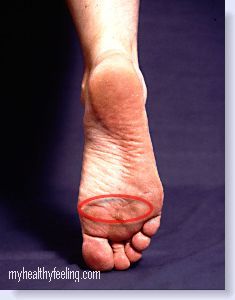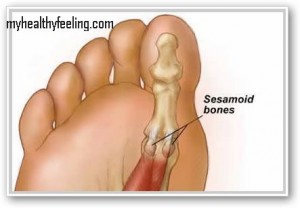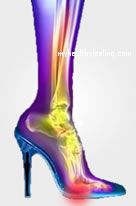Metatarsalgia is a condition characterized by having pain in ball of foot. It is one of the more common disorders of the foot affecting joints and bones at the soles. There are numerous reasons why many experience pain in ball of foot. Read on to know about the causes, symptoms and prevention of metatarsalgia.
When we walk, we use our feet to push off the ground. During walking, running or jumping, the whole weight of our body is transferred to the toes and the ball of the foot, or the metatarsals. Much of the impact of this force is endured by the first and second metatarsals. This force is equivalent to as high as 275 percent of the weight of the body.
However, when you walk differently, the force of impact and weight will be distributed in a different way. This could result to undue pressure on the ball of foot that could lead to the development of metatarsal problems specifically on the ends of the metatarsal bones that connect to the bones of the toes. Swelling and pain in ball of foot will then occur.
Pain in ball of foot pictures
Causes
Usually, it does not take only a single factor to cause pain in ball of foot. It is usually a play of different factors. The following lists down the various factors that may lead to metatarsalgia.
• Shape of the foot
If you have a longer second toe than a big toe or if the arch in your foot is high, added force is placed on the metatarsals, thus, resulting to pain in ball of foot.
• Extreme movement and training
If you are into high impact sports, like running, you are at risk of metatarsalgia. During running, the front part of the foot takes in much of the impact. Thus, occurrence of metatarsalgia in runners is more common than in any other sports enthusiasts.
• Ill-fitting shoes and high heels
These make the forefoot bear much of the weight. Sports shoes that have no padding or deficient in support, and narrow-toed shoes, likewise, add up to the problem.
• Stress fractures
Tiny fractures on the bones of your feet and toes may cause pain, thus compelling you to shift and improperly place your weight on your foot. This worsens metatarsalgia.
• Hammertoes
If one of your toes, typically the second toe, is curled due to constant wearing of tight-fitting shoes or high heels, this could result to pain the metatarsal region since this condition presses the metatarsal heads. Here is more information on hammertoe
• Bunions
Have you noticed a big bump on the base of your big toe? Is it swollen and painful? This is a bunion and it adds stress to the ball of your foot since the big toe is weakened by its presence. Operation to remove the bunion could also affect pain in ball of foot.
• Morton’s neuroma
This is manifested by a growth of fibrous tissue that is usually found in between the third and fourth metatarsal heads. This noncancerous growth is one the consequences of regularly wearing very tight fitting shoes and high heeled footwear. High-impact movements could also result to the development of this condition. The symptoms of Morton’s neuroma are not dissimilar to metatarsalgia.
• Overweight
The heavier you are the more pressure is exerted on the metatarsals when you move. This happens because your whole weight is passed on to the front of the foot. So if you have extra weight and are experiencing pain in ball of the foot, try to lose some weight to resolve the symptom.
• Aging
When we age, the fat that protects the balls of our feet thins out. This makes the metatarsal bones more exposed to injury. It is common for older people to feel pain in ball of the foot.
Prevention of Metatarsalgia
We have to take care of our metatarsals to avoid any suffering that may come from pain caused by metatarsalgia. The following are some very practical, easy but effective tips to help protect your feet.
• Wear the right footwear. Avoid wearing too tight fitting shoes, high heels, shoes that do not have sufficient padding and support and narrow-toed shoes. Opt for shoes with wide toe box and rocker soles as these helps in properly distributing weight on the foot.
• To prevent the occurrence of metatarsalgia and also alleviate the pain when it does develop, use arch supports, metatarsal pads and padded insoles.
• Keep your weight just right. If you have a healthy weight you are saving your feet from unnecessary burden.
• Avoid demanding activities when you’ve just come from an injury. If you are not fully recovered and you immerse yourself to arduous tasks, you may complicate your condition.
The feet are important for us to function properly. We must do everything we can to avoid having pain in ball of foot, as this impedes our daily activities.


